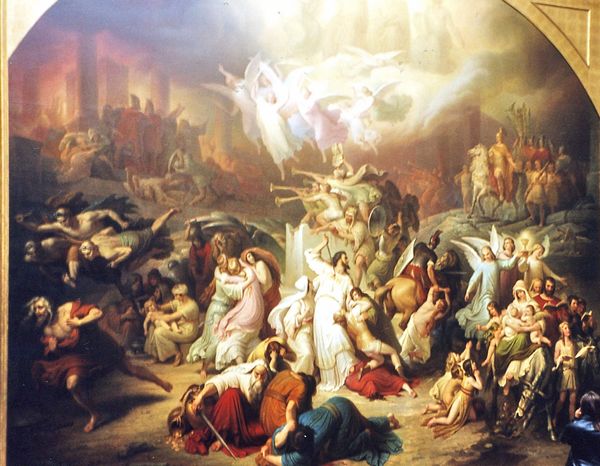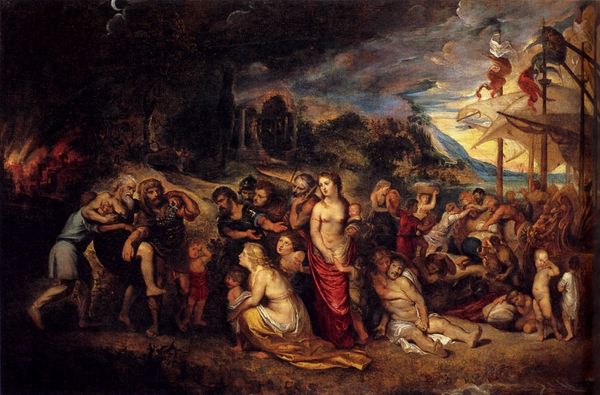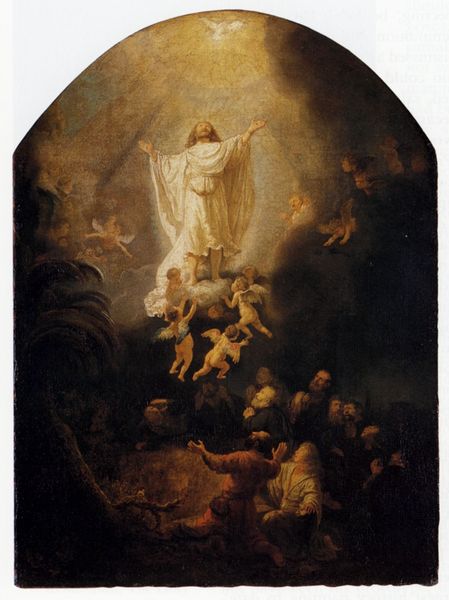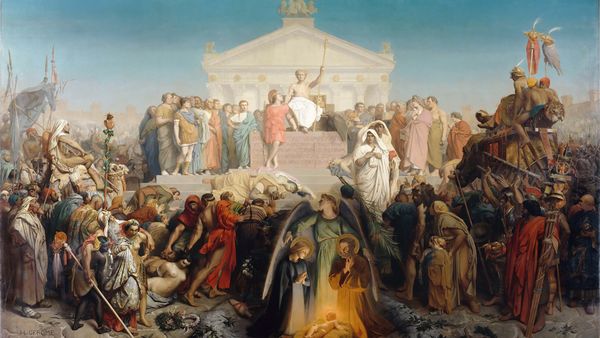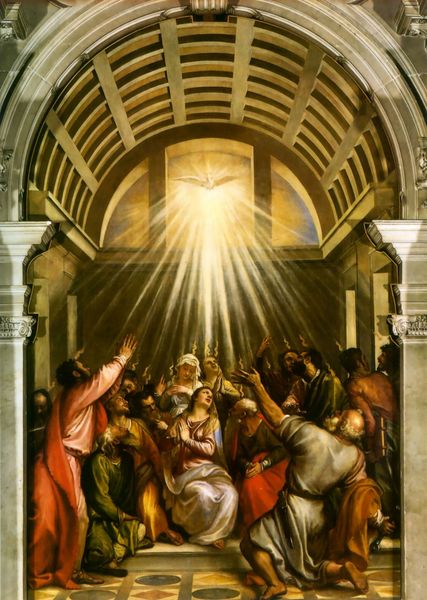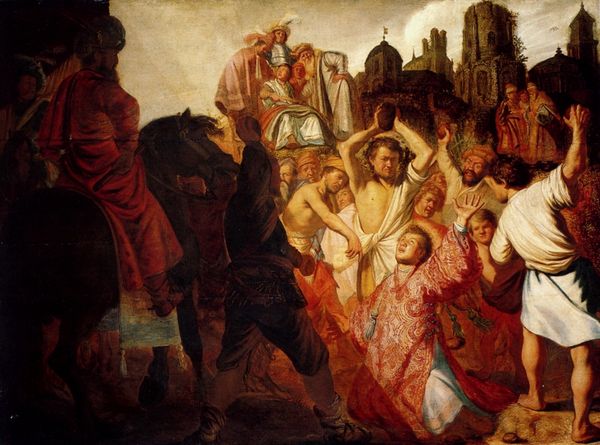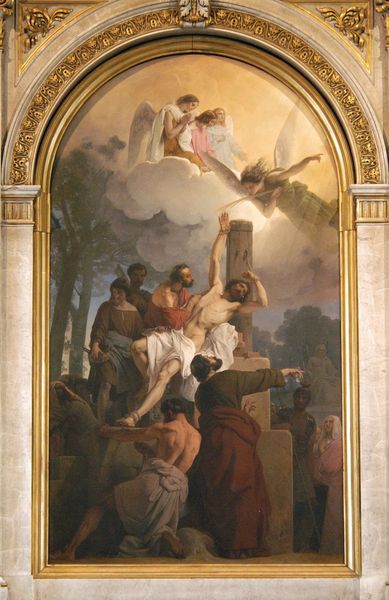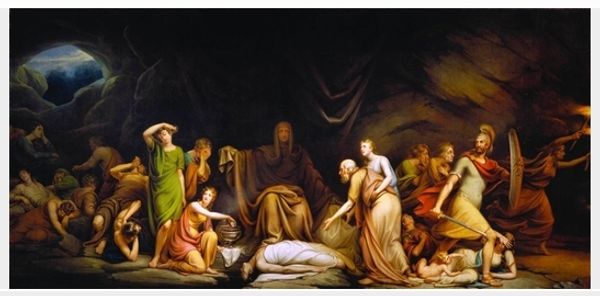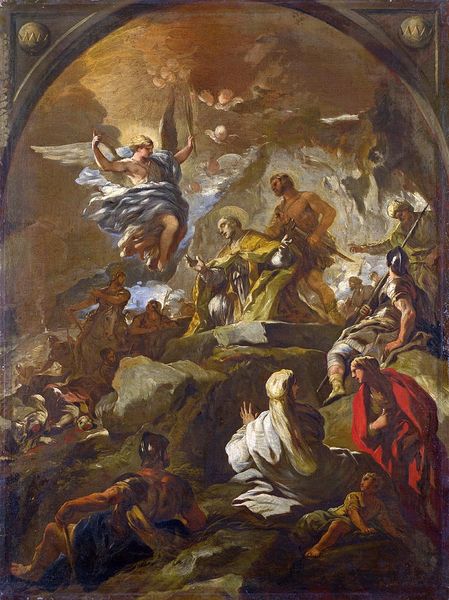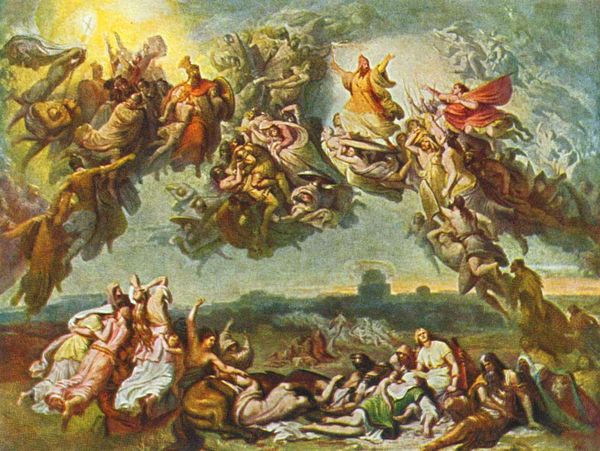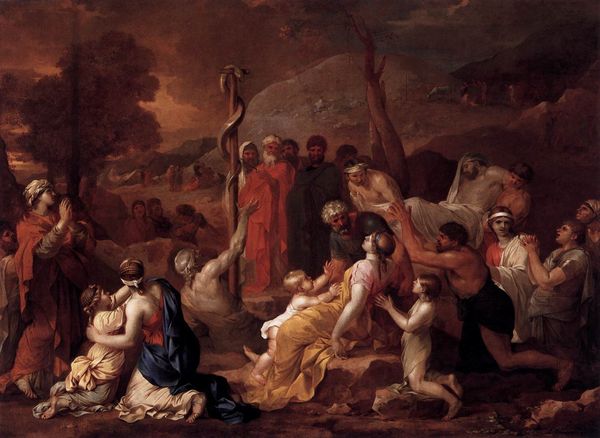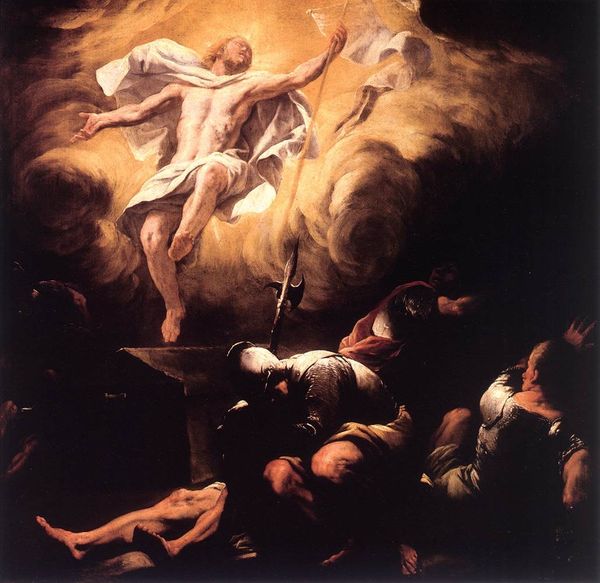
painting, oil-paint
#
narrative-art
#
painting
#
oil-paint
#
oil painting
#
romanticism
#
history-painting
#
realism
Copyright: Public domain
Editor: Wilhelm von Kaulbach's painting, "Crusaders Before Jerusalem," at the Met, it's intense, full of action but also reverence, almost like two scenes clashing into one. It's epic in scale, visually dramatic, and emotionally charged. What’s your reading of it? Curator: The work speaks to the nineteenth-century's fascination with the Middle Ages, but crucially, how those events were reshaped for a contemporary audience. Consider the painting’s role within the burgeoning museum culture, inviting a largely Christian audience to reflect upon historical narratives of religious triumph and power, or narratives that glorified western society as a vehicle of the Divine. Does the glorification of violence trouble you when viewing it? Editor: Definitely. The reverence contrasts with the conquest. It makes me wonder, was this painting intended as celebration, or something more complex, maybe a comment on power and piety? Curator: Precisely! Examine how Kaulbach presents the Crusaders: not just as warriors but as divinely sanctioned figures. This blend of religious fervor and military might reflects a specific 19th-century ideology. Remember that history paintings like this reinforced a national or cultural identity. Whom do you think the intended audience would see themselves within this tableau? Editor: Probably within the idealized Crusaders, seeing themselves as inheritors of that legacy, a bit troubling, given the violence inherent in the Crusades. So, the painting serves as propaganda as well? Curator: It functions as both historical representation and cultural tool. Art institutions then played a critical role in validating such grand narratives. Seeing it today, one should question what the painting tells us about the continued power of such narratives, particularly within our cultural institutions. Editor: I never considered that aspect. It highlights how deeply ingrained certain perspectives were and how museums continue to be shaped by these inherited biases. Thanks! Curator: My pleasure. Considering the public role of art ensures the complexity is highlighted when reflecting on how the politics of imagery are continually in action today.
Comments
No comments
Be the first to comment and join the conversation on the ultimate creative platform.
